RG-AP9861-R Wi-Fi 7 24.436 Gbps Indoor Access Point, 18 Spatial Streams, Built-in AI Radio
Applicable to Ruijie Simplified Optical Ethernet Solution and ideal for high-density indoor scenarios in the sectors covering higher education, government, general education, finance, and business.
Highlight Features
- Enterprise-class Wi-Fi 7 revolution, delivering a data rate of up to 24.436 Gbps
- 10GE SFP+/RJ45 combo port for flexible networking, empowering future applications
- Ruijie Simplified Optical Ethernet Solution, guaranteeing worry-free network running in the next decade
- Self-developed AI Radio technology, enabling real-time, full-band scanning and seamless roaming
- Digital twin network, improving network O&M efficiency by 30%
Specifications
| Radio Specifications | RG-AP9861-R |
| 802.11n | 16 spatial streams ● Radio 1 – 2.4 GHz: 4×4 MIMO, four spatial streams ● Radio 2 – 5 GHz: 4×4 MIMO, four spatial streams ● Radio 3 – 5 GHz: 4×4 MIMO, four spatial streams ● Radio 4 – 6 GHz: 4×4 MIMO, four spatial streams Channel: ● Radio 1 – 2.4 GHz: 20 MHz and 40 MHz ● Radio 2 – 5 GHz: 20 MHz and 40 MHz ● Radio 3 – 5 GHz: 20 MHz and 40 MHz ● Radio 4 – 6 GHz: 20 MHz and 40 MHz ● Radio 5 – 2.4 GHz/5 GHz: 20 MHz and 40 MHz Combined peak data rate: 2.400 Gbps Radio 1 – 2.4 GHz: 6.5 Mbps to 600 Mbps (MCS0 to MCS31) Radio 2 – 5 GHz: 6.5 Mbps to 600 Mbps (MCS0 to MCS31) Radio 3 – 5 GHz: 6.5 Mbps to 600 Mbps (MCS0 to MCS31) Radio 4 – 6 GHz: 6.5 Mbps to 600 Mbps (MCS0 to MCS31) Radio 5 – 2.4 GHz/5 GHz: Scanning Radio technologies: Orthogonal Frequency-Division Multiplexing (OFDM) Modulation types: BPSK, QPSK, 16-QAM, and 64-QAM Packet aggregation: ● Aggregate MAC Protocol Data Unit (A-MPDU) ● Aggregate MAC Service Data Unit (A-MSDU) Dynamic Frequency Selection (DFS) Cyclic Delay/Shift Diversity (CDD/CSD) Maximum Ratio Combining (MRC) Space-Time Block Coding (STBC) Low-Density Parity Check (LDPC) Transmit beam-forming (TxBF) |
| 802.11ac | 12 spatial streams ● Radio 2 – 5 GHz: 4×4 MIMO, four spatial streams ● Radio 3 – 5 GHz: 4×4 MIMO, four spatial streams ● Radio 4 – 6 GHz: 4×4 MIMO, four spatial streams Channel: ● Radio 2 – 5 GHz: 20 MHz, 40 MHz, 80 MHz, and 160 MHz ● Radio 3 – 5 GHz: 20 MHz, 40 MHz, 80 MHz, and 160 MHz ● Radio 4 – 6 GHz: 20 MHz, 40 MHz, 80 MHz, and 160 MHz ● Radio 5 – 5GHz: 20 MHz, 40 MHz, and 80 MHz Combined peak data rate: 10.401 Gbps Radio 2 – 5 GHz: 6.5 Mbps to 3.467 Gbps (MCS0 to MCS9) Radio 3 – 5 GHz: 6.5 Mbps to 3.467 Gbps (MCS0 to MCS9) Radio 4 – 6 GHz: 6.5 Mbps to 3.467 Gbps (MCS0 to MCS9) Radio 5 – 5 GHz: Scanning Radio technologies: Orthogonal Frequency-Division Multiplexing (OFDM) Modulation types: BPSK, QPSK, 16-QAM, 64-QAM, and 256-QAM Packet aggregation: ● Aggregate MAC Protocol Data Unit (A-MPDU) ● Aggregate MAC Service Data Unit (A-MSDU) Dynamic Frequency Selection (DFS) Cyclic Delay/Shift Diversity (CDD/CSD) Maximum Ratio Combining (MRC) Space-Time Block Coding (STBC) Low-Density Parity Check (LDPC) Transmit beam-forming (TxBF) |
| 802.11ax | 16 spatial streams ● Radio 1 – 2.4 GHz: 4×4 uplink/downlink MU-MIMO, four spatial streams ● Radio 2 – 5 GHz: 4×4 uplink/downlink MU-MIMO, four spatial streams ● Radio 3 – 5 GHz: 4×4 uplink/downlink MU-MIMO, four spatial streams ● Radio 4 – 6 GHz: 4×4 uplink/downlink MU-MIMO, four spatial streams Channel: ● Radio 1 – 2.4 GHz: 20 MHz and 40 MHz ● Radio 2 – 5 GHz: 20 MHz, 40 MHz, 80 MHz, and 160 MHz ● Radio 3 – 5 GHz: 20 MHz, 40 MHz, 80 MHz, and 160 MHz ● Radio 4 – 6 GHz: 20 MHz, 40 MHz, 80 MHz, 160 MHz, and 320 MHz Combined peak data rate: 20.363 Gbps ● Radio 1 – 2.4 GHz: 7.3 Mbps to 1.147 Gbps (MCS0 to MCS11) ● Radio 2 – 5 GHz: 7.3 Mbps to 4.804 Gbps (MCS0 to MCS11) ● Radio 3 – 5 GHz: 7.3 Mbps to 4.804 Gbps (MCS0 to MCS11) ● Radio 4 – 6 GHz: 7.3 Mbps to 9.608 Gbps (MCS0 to MCS11) Radio technologies: uplink/downlink Orthogonal Frequency-Division Multiple Access (OFDMA) Modulation types: BPSK, QPSK, 16-QAM, 64-QAM, 256-QAM, and 1024-QAM Packet aggregation: ● Aggregate MAC Protocol Data Unit (A-MPDU) ● Aggregate MAC Service Data Unit (A-MSDU) Dynamic Frequency Selection (DFS) Cyclic Delay/Shift Diversity (CDD/CSD) Maximum Ratio Combining (MRC) Space-Time Block Coding (STBC) Low-Density Parity Check (LDPC) Transmit beam-forming (TxBF) WPA3 |
| 802.11be | 16 spatial streams ● Radio 1 – 2.4 GHz: 4×4 uplink/downlink MU-MIMO, four spatial streams ● Radio 2 – 5 GHz: 4×4 uplink/downlink MU-MIMO, four spatial streams ● Radio 3 – 5 GHz: 4×4 uplink/downlink MU-MIMO, four spatial streams ● Radio 4 – 6 GHz: 4×4 uplink/downlink MU-MIMO, four spatial streams Channel: ● Radio 1 – 2.4 GHz: 20 MHz and 40 MHz ● Radio 2 – 5 GHz: 20 MHz, 40 MHz, 80 MHz, and 160 MHz ● Radio 3 – 5 GHz: 20 MHz, 40 MHz, 80 MHz, and 160 MHz ● Radio 4 – 6 GHz: 20 MHz, 40 MHz, 80 MHz, 160 MHz, and 320 MHz Combined peak data rate: 24.436 Gbps ● Radio 1 – 2.4 GHz: 7.3 Mbps to 1.377 Gbps (MCS0 to MCS13) ● Radio 2 – 5 GHz: 7.3 Mbps to 5.765 Gbps (MCS0 to MCS13) ● Radio 3 – 5 GHz: 7.3 Mbps to 5.765 Gbps (MCS0 to MCS13) ● Radio 4 – 6 GHz: 7.3 Mbps to 11.529 Gbps (MCS0 to MCS13) Radio technologies: uplink/downlink Orthogonal Frequency-Division Multiple Access (OFDMA) Modulation types: BPSK, QPSK, 16-QAM, 64-QAM, 256-QAM, 1024-QAM, and 4096-QAM Packet aggregation: ● Aggregate MAC Protocol Data Unit (A-MPDU) ● Aggregate MAC Service Data Unit (A-MSDU) Dynamic Frequency Selection (DFS) Cyclic Delay/Shift Diversity (CDD/CSD) Maximum Ratio Combining (MRC) Space-Time Block Coding (STBC) Low-Density Parity Check (LDPC) Transmit beam-forming (TxBF) WPA3 |
| Antenna | Wi-Fi ● 2.4 GHz: four built-in omnidirectional smart antennas, with peak antenna gain of 3 dBi ● 5 GHz: eight built-in omnidirectional smart antennas, with peak antenna gain of 3 dBi ● 6 GHz: four built-in omnidirectional smart antennas, with peak antenna gain of 3 dBi Bluetooth ● One built-in omnidirectional antenna, with peak antenna gain of 3 dBi |
| Port | 1 x 100/1000/2.5G/5G/10GBase-T port (10G/PoE IN port on the AP) 1 x 1000/2.5G/5G/10GBase-T port (10G/WAN2 port on the AP), shared with one 10GE SFP+ port 1 x 10GE SFP+ port, compatibility with 10GE/2.5GE/1GE modules, shared with one 10GE RJ45 port (10G/WAN2 port on the AP) 1 x 10/100/1000Base-T port 1 x RJ45 console port (serial console port) 1 x USB 3.0 (Type-A connector) 1 x Bluetooth 5.3 |
| Status LED | 1 x multi-color system status LED ● AP power-on status ● Software initialization status and upgrade status ● Uplink service interface status ● Wireless user online status ● CAPWAP tunnel timeout ● Specific AP locating |
GPS positioning | Supported |
| Button | 1 x Reset button ● Press the button for shorter than 2 seconds. Then the device restarts. ● Press the button for longer than 5 seconds. Then the device restores to factory settings. |
| Dimensions (W x D x H) | Main unit: 245 mm x 245 mm x 67 mm (9.65 in. x 9.65 in. x 2.64 in.) Shipping: 485 mm x 346 mm x 340 mm (19.09 in. x 13.62 in. x 13.39 in.) |
| Weight | Main unit: 2.0 kg (4.41 lbs) Mounting bracket: 0.2 kg (0.44 lbs) Shipping weight: 2.76 kg (6.08 lbs) |
| Mounting | Wall/Ceiling-mount (a mounting bracket is delivered with the main unit) |
| Lock option | Securing latch and Kensington lock |
| Input power supply | The AC supports the following two power supply modes: ● 54 V DC/1.25 A power input over DC connector: The DC connector accepts the center-positive circular plug with the inner diameter of 2.5 mm (0.10 in.) or outer diameter of 5.5 mm (0.22 in.) and the length of 9.5 mm (0.37 in.). A DC power supply needs to be purchased independently. ● PoE input over WAN 1: The power sourcing equipment (PSE) complies with IEEE 802.3at/bt standard (PoE+/PoE++) Note: if both DC power and PoE are available, DC power is preferred. |
| Maximum power consumption | Maximum power consumption: 60 W ● DC power: 60 W, Radio 1 (2.4 GHz) 4×4, Radio 2 (5 GHz) 4×4, Radio 3 (5 GHz) 4×4, Radio 4 (6 GHz) 4×4, Radio 5 (AI Radio) 2×2, LAN1 for PoE power supply (48 V/12.95 W), USB port for external power supply (5 V/5 W) ● 802.3bt (PoE++): 60 W, Radio 1 (2.4 GHz) 4×4, Radio 2 (5 GHz) 4×4, Radio 3 (5 GHz) 4×4, Radio 4 (6 GHz) 4×4, Radio 5 (AI Radio) 2×2, LAN1 for PoE power supply (48 V/12.95 W), USB port for external power supply (5 V/5 W) ● 802.3at (PoE+): 25 W, Radio 1 (2.4 GHz) 2×2, Radio 2 (5 GHz) 2×2, Radio 3 (5 GHz) 2×2, both Radio 4 and AI Radio disabled, LAN1 that can transmit data but does not support PoE power supply, USB port that fails to supply power to an external device ● Idle mode: 20 W |
| External power supply | When powered by 802.3bt (PoE++), the AP can supply power to an external device. ● The USB port can source 5 V/5 W power to an attached device. ● The LAN 1 port can source 48 V/12.95 W power to an IoT unit. |
| Environment | Storage temperature: –40°C to +70°C (–40°F to +158°F) Storage humidity: 5% RH to 95% RH (non-condensing) Storage altitude: –500 m to +5,000 m (–1,640.42 ft. to +16,404.20 ft.) Operating temperature: –10°C to +50°C (14°F to 122°F) Operating humidity: 5% RH to 95% RH (non-condensing) Operating altitude: –500 m to +3,000 m (–1,640.42 ft. to +9,842.52 ft.) Note: At an altitude in the range of 1,800–3,000 m (5,905.51–9,842.52 ft.), every time the altitude increases by 166 m (544.62 ft.), the maximum temperature decreases by 1°C (1.8°F). |
| Mean Time Between Failure (MTBF) | 200,000 hours (22 years) at the operating temperature of 25°C (77°F) |
| System memory | SDRAM: 8 GB NAND: 2 GB SPI: 32 MB |
| Transmit power | 2.4 GHz ● Maximum transmit power: 30 dBm (1000 mw) ● Minimum transmit power: 10 dBm (10 mw) 5 GHz ● Maximum transmit power: 30 dBm (1000 mw) ● Minimum transmit power: 10 dBm (10 mw) 6 GHz ● Maximum transmit power : 30 dBm (1000 mw) ● Minimum transmit power : 10 dBm (10 mw) Note: The transmit power adjusted in percentage. The transmit power is limited by local regulatory requirements. For details, see WLAN Country or Region Codes and Channel Compliance. |

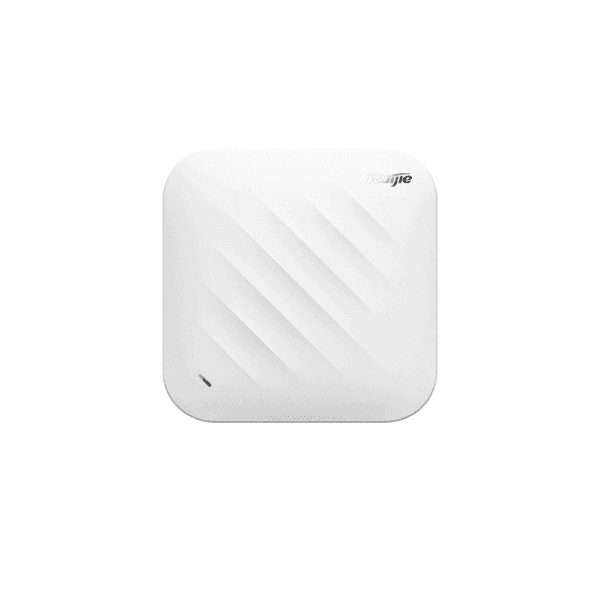




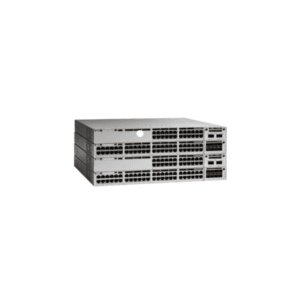
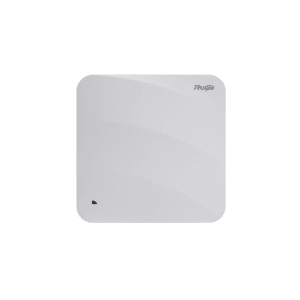
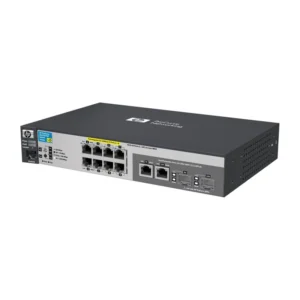
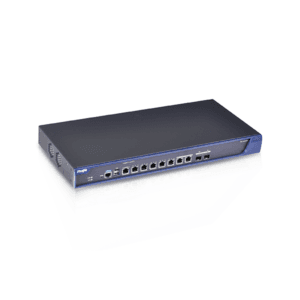
Reviews
There are no reviews yet.